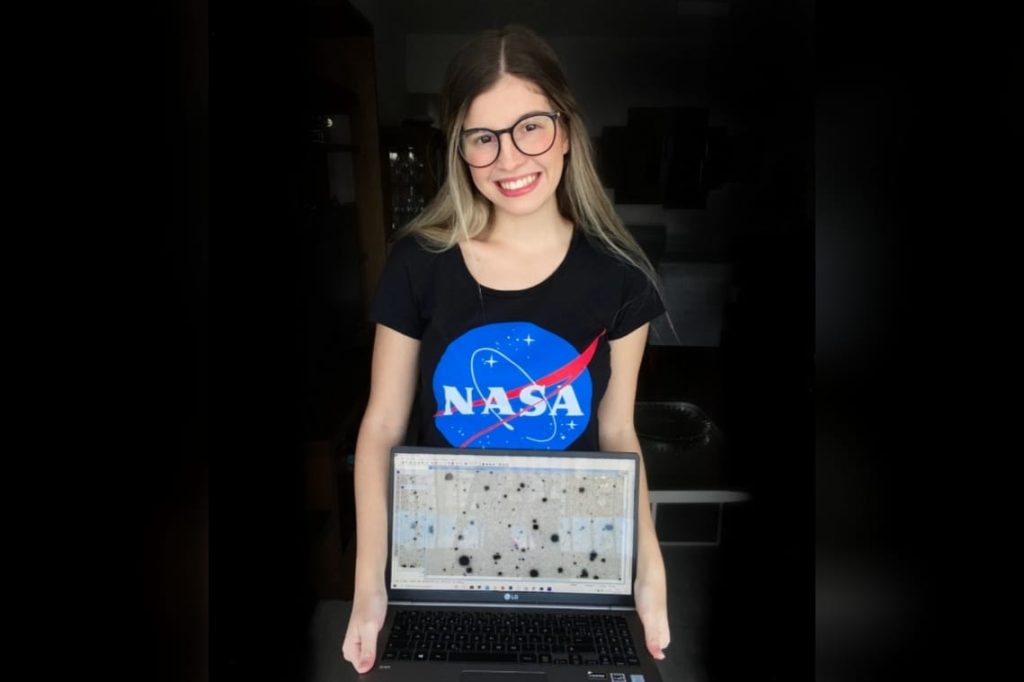Sao Paulo –Medical student Verena Bakula Menezes, 22, stood out when she was honored by the Hunting Program asteroids, from the Ministry of Science, Technology and Innovations of Brazil, in partnership with NASA. She was responsible for discovering 25 asteroids, one of which is rare, that can collide with Earth.
“Looking for these things is very important, because we need to analyze the potential for collision with the planet and the harm to humans,” says the young woman, a nursing technician at Unicamp who is currently in her second year at university. Ribeirão Preto School of Medicine (FMRP), from the University of São Paulo (USP).
She said capital Cities It’s hard being in academia and not noticing a female presence. “It’s remarkable that there are no women inside the labs, doing research, getting recognition. This is another part of my achievement, showing new generations of girls that it’s possible for women to be in the sciences, because it’s a battle,” Verena said.
The student received the award on 9/12 from Patrick Miller, creator of the NASA program and coordinator of the International Astronomical Research Collaboration (IASC).
Discovery
Asteroids are cosmic bodies orbiting in outer space around the sun, especially between the orbits of Mars and Jupiter. They are a few hundred kilometers long and irregular in shape and catch fire when they come into contact with the Earth’s atmosphere.
“Of the more than 25 asteroids that I have discovered, one of them is considered weak, which is a very important and rare type, because it moves slower. Usually it is this type of asteroid that collides with Earth. They are asking for more attention from NASA,” he explained.
The US agency is collecting data and will analyze the asteroid’s orbit to check the likelihood and when of a collision with our planet. The university student will also be able to name asteroids, and one of them will be named after her grandmother.
The discoveries occurred through software used by NASA and other entities. “In Hawaii, there is a telescope that takes pictures from space, which are sent to me in bundles. I like to throw these logs into the program, and through programming, the images will be sequentially fixed. In this way, you can analyze what was there, whether it is stationary or moving. In While the stars are stationary, the asteroids are in orbits,” Verena said.
The student said it is an ideal training for young people, in order to train new asteroid hunters and encourage more students to enter the field of science. “I intend to involve more young people from Brazil in training Asteroid Hunt. I will open the first course through my Instagram profile,” he added.
academic life
Her interest in spatial analysis arose while she was studying for the medical school entrance exam, which is her dream course. “I have a degree in Nursing Technology from Unicamp and was studying a degree in Neuroscience in Canada. Returning to Brazil and having to review high school content was almost torture. I was so bored, so I didn’t need to be stimulated. When I heard about the opportunity to search for asteroids, I thought it was really cool and embraced the idea.”
When asked about the future in space, Verena emphasized that the current idea is medicine. “I’ve dreamed about it for as long as I can remember. I’ll be a doctor, but specialization is something that can be discussed in my head.”
“My main interest at the moment is neurosurgery. But I am also very motivated by the space area. I am thinking of doing a specialized course in space medicine or space neurosurgery, but here in Brazil it is very little advertised,” he said.
The young woman also emphasizes that a large part of her students’ path happened through public education. “My high school was all public school. I studied at a technical school in Unicamp. I went to Canada to graduate, with the support of a Brazilian institution, Fundação Estudar, but nevertheless, the costs were very high,” he said. “I decided to go back to Brazil and it was the best decision I made,” he concluded.

“Hardcore beer fanatic. Falls down a lot. Professional coffee fan. Music ninja.”







More Stories
A study reveals 5 healthy fruits in the world; See what they are
The first science fair in São Caetano encourages research using… ABC do ABC
Educational work discusses women in science